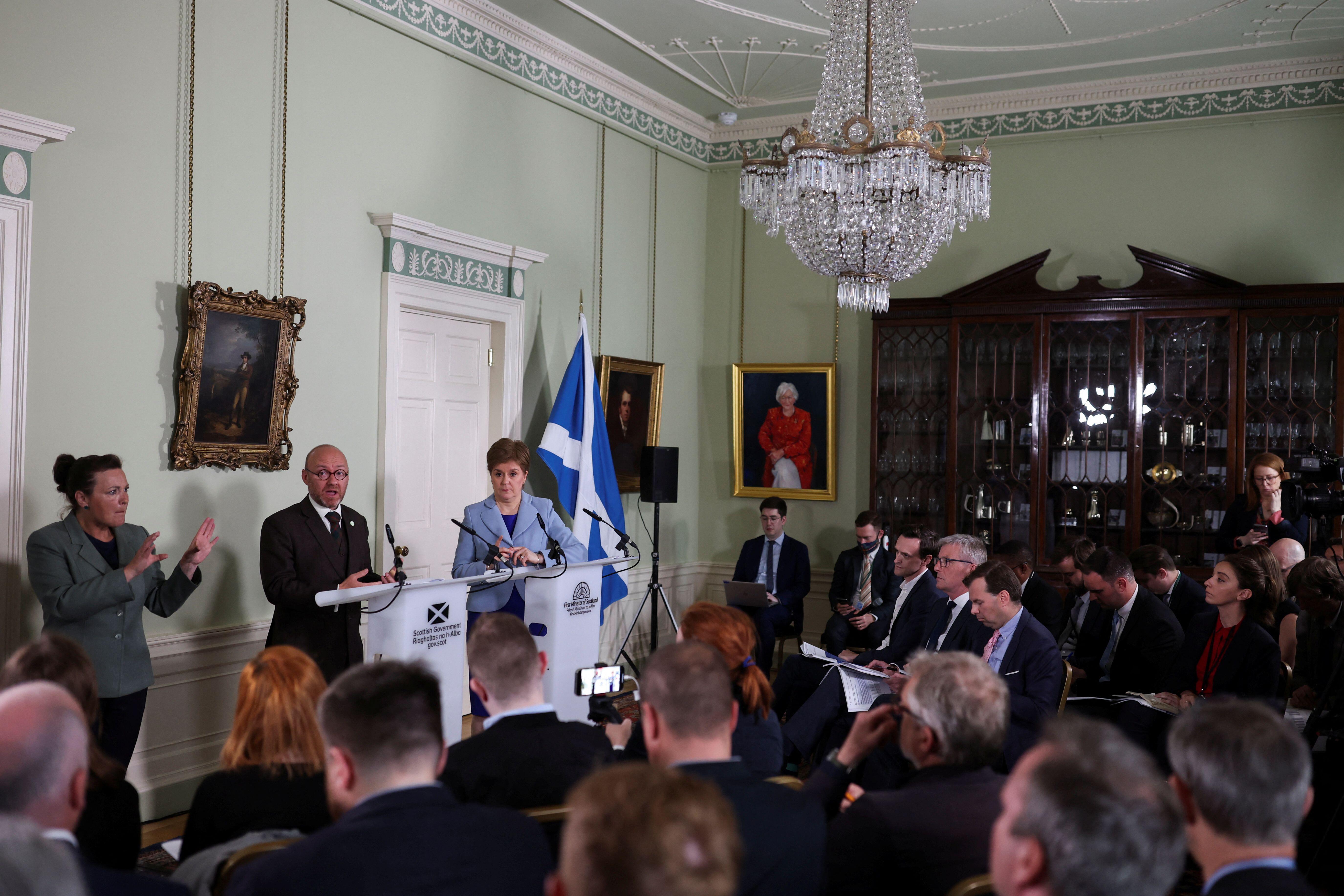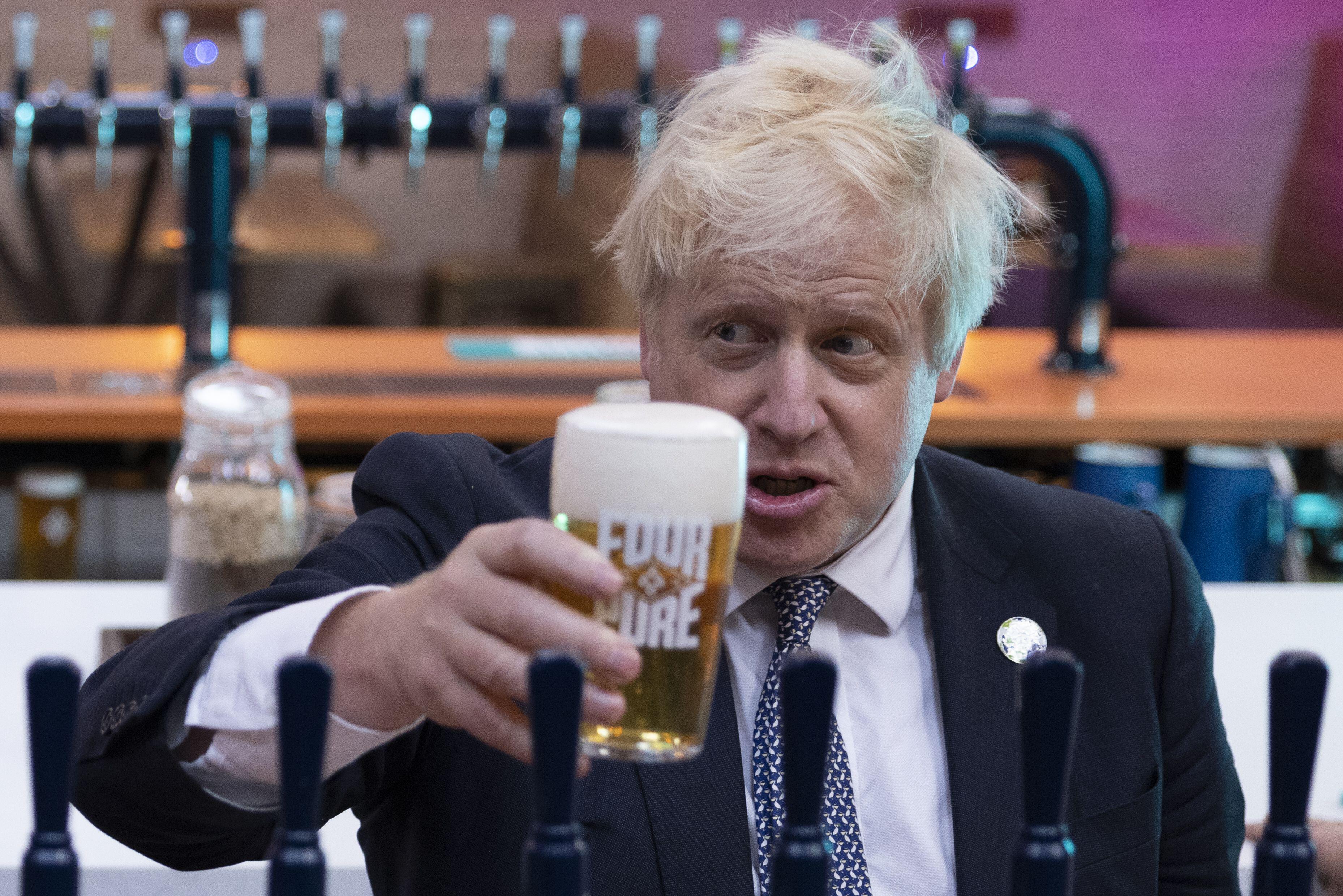Bad Break-Up: Eight years on from the referendum, Scotland is back where it started
In the eight years since the independence referendum, Scotland has been dragged through an acrimonious divorce caused by Brexit and experienced the collective trauma of Covid. Since 2019, we’ve endured the premiership of Boris Johnson, a leader perhaps unparalleled not only in the antipathy he inspires north of the border, but also in his ignorance of the challenges facing modern Scotland.
If the past is indeed a foreign country, then 2014 is the sunlit uplands, a faraway land which remains forever inside the EU.
But for all the change, the rancour and the division of the years since the first referendum, has the dial really shifted on independence? The answer, according to the polls, is barely.
“If we could turn the clock back and people in 2014 could have foreseen the path that the UK would have taken out of the European Union [and] Boris Johnson as prime minister, then Scotland would have undoubtedly voted yes back then.”
That was the assertion made by First Minister Nicola Sturgeon in an interview with STV as she prepared to launch the first in a series of papers setting out the case for independence, a rather dry document full of charts and graphs which the Scottish Government ominously referred to as a “scene-setter” for the campaign yet to come.
Less than 24 hours later, political journalists crammed into the stuffy confines of Bute House for a press conference, with Sturgeon and Greens co-leader Patrick Harvie at the podium. The message from the First Minister was unambiguous, if not altogether new: “It’s time to talk about independence.”
Yet since 2014, we’ve barely stopped for breath while talking about independence. Sturgeon’s hypothesis that many Scots would’ve voted differently eight years ago had they known about the complete clusterfuck still to come may have merit, but in the here and now reality of 2022, the polls show that despite everything that has gone before, support for leaving the Union remains at roughly 50 per cent.
Despite Brexit, despite more than 180,000 deaths during the pandemic, despite an unprecedented cost-of-living crisis, despite Boris Johnson, despite everything, half of Scots still think their future lies in the UK. It’s a serious problem for Sturgeon, although one that is not altogether surprising when we consider the SNP’s recent record in government.
While the chaos on Scotland’s railways and the government’s inability to deliver a census are two recent high-profile examples of that failing record, there are deeper, more intractable problems which have been left to fester.
On child poverty, on educational attainment, on the challenges facing Scotland’s NHS, this is a government much like its counterpart at Westminster – stagnating amid an intellectual torpor.
For supporters of independence, the answer to those issues is – and always has been – separation. Only with the full fiscal levers at our fingerprints, the ability to re-shape social security and immigration will Scotland truly prosper, they say.
But that argument has failed to win over the doubters until now, so what makes them think things will change?
And winning over the doubters is apparently the strategy behind the decision to publish a series of documents in the coming months which together will form a prospectus, Building a New Scotland, the business case for the renewed independence push.
The first, published last week, Independence in the Modern World. Wealthier, Happier, Fairer: Why Not Scotland?, examines the economies of countries such as Ireland, Sweden and the Netherlands concluding, perhaps unsurprisingly, that they are all doing much better economically than the UK. Other papers will follow on currency, pensions, EU membership and on defence and security.
But if the first of these papers was anything to go by, it seems unlikely they will win over those who in the eight years since the last vote have still not made up their minds. Nor are they likely to convert Unionists to the independence cause. Their publication may, however, help stave off some of the rising tide of frustration among those desperately seeking indyref2.
Instead, the great takeaway from Sturgeon’s “scene-setter” was not about the GDP of Finland or child poverty levels in Austria, but rather the First Minister’s pledge to push ahead with a second referendum even without the explicit support of the UK Government.
 Nicola Sturgeon and Patrick Harvie address journalists at Bute House | Credit: Alamy
Nicola Sturgeon and Patrick Harvie address journalists at Bute House | Credit: Alamy
Ahead of the 2014 vote, a section 30 order was granted as part of the so-called Edinburgh Agreement signed by David Cameron and Alex Salmond. The order refers to the part of the Scotland Act that allows for Holyrood to legislate in areas usually reserved to Westminster. It’s already clear that such an order will not be so easily granted this time around.
Yet even as she looked into the camera in a direct appeal to the Prime Minister at last week’s press launch, Sturgeon was telling journalists that it was still possible to “forge a way ahead” in a lawful manner without a section 30 order.
It’s a calculated risk as the First Minister knows that any such move is likely to end up in the courts, an awkward situation for the UK Government, which Sturgeon repeatedly referred to as “democracy-denying”.
Indeed, as recently as last August Michael Gove said the government would not stand in the way of second referendum should it be the “settled will” of the Scottish people. How that settled will is defined, however, remains open to debate with polls showing that only a third of Scots agree with the SNP that indyref2 should be held by the end of next year.
“The Scottish Government’s argument is that it is already within the competence of the Scottish Parliament to authorise a referendum,” says Aileen McHarg, a professor of law at Durham University.
“But a section 30 order or an amendment of the Scotland Act as occurred in 2014 serves two purposes – to put the competence of a referendum beyond challenge so that you’re not wasting time in court and to secure cooperation, because the referendum is only the starting point in a process of being independent.”
Within hours of Sturgeon’s comments about holding a poll without securing a section 30 order, the Scottish Tories began referring to such a vote as a “wildcat referendum”. But McHarg says that even a unilateral referendum would still need to be legal and would likely require a ruling from the Supreme Court.
“A unilateral referendum will only happen if a court has held that it is intra vires,” she says.
“Because if a court says that this isn’t within the competence of the Scottish Parliament, I think it’s inconceivable that the Scottish Government would somehow try to hold a referendum.
“It simply wouldn’t work – they couldn’t instruct local authorities to run the poll, they couldn’t have any regulation of campaign finance…it’s either a unilateral referendum which has the imprimatur of the Supreme Court to say it’s legally valid, or it doesn’t happen.
“My fundamental view is that this is really a political process. At some point, whether it’s over the referendum or after the referendum, there is going to have to be agreement, cooperation and negotiation. We saw that the Brexit referendum was just the first step on a long, torturous journey.”
One source who was close to the 2012 Edinburgh Agreement says that if Sturgeon manages to secure legislation which is a “legit successor” to that passed in 2014, then along with her political mandate, she will be in a strong position – one which will be hard for Unionists to resist.
However, without independently approved legislation and a commitment from the Electoral Commission to set the question in a referendum, the vote would be a “complete waste of time and too easy for Unionists to dismiss”.
The dynamic will undoubtedly be different this time around. The irony of Brexit is that it was opposed by the SNP but has helped reinvigorate the case for a second referendum. Yet while it has helped underline Scotland’s ongoing democratic deficit, it has also shown just how messy things can get. A win for Yes would be the start of the process, not the end.
The Better Together case may also be more difficult to make than it was in 2014. Back then, “project fear,” as nationalists chose to describe it, pointed to a future of economic disasters and political calamities. For many, those scenarios have already come to pass in a United Kingdom hit by the double whammy of a post-pandemic overheating global economy and the self-inflicted trauma of Brexit.
And then there is the Yes campaign’s greatest political asset: the Prime Minister.
Boris Johnson will not be in power for ever – he may not even be in power at the time of the referendum – but his continuing unpopularity must be a huge worry for everyone who believes the UK is worth saving.
A recent poll by Ipsos MORI found satisfaction with the Prime Minister’s performance at an all-time low, with 83 per cent of respondents dissatisfied. Nearly sixty per cent of those polled felt they were worse off than a year ago, while almost two-thirds said they would be worse off if a Johnson-led Conservative Party won the next general election.
 The Prime Minister is a major electoral asset for Yes | Credit: Alamy
The Prime Minister is a major electoral asset for Yes | Credit: Alamy
And yet for all Johnson’s obvious flaws and his unpopularity north of the border, the same poll found Scots split 50-50 on the question of independence. Many of those who voted in 2014 simply have not changed their mind, helping to leave us stuck in our current constitutional impasse.
And on the big questions – currency, pensions, EU membership and the prospect of a border with England – we’re still waiting for answers.
If the prospectus being published by the Scottish Government over the coming months is a genuine attempt to answer some of those questions, then that is to be welcomed. But whatever conclusions are reached are likely to be heavily contested by the other side. The First Minister’s claim that unlike Brexit, independence will not be a huge leap into the unknown is far from convincing.
.jpg)
If the Scottish Government’s preferred timetable is met – currently another unknown – then Scotland will vote in its second referendum in October 2023, a little over nine years since the last.
Since 2014, our politics has been consumed by fracture and division, helping distract from a failure to address many of the issues already within the ambit of the government at Holyrood.
While it’s in the SNP’s interests to argue that devolution isn’t working, that it’s fighting with one hand tied behind its back, competence over areas such as education and health would perhaps do more to win over the hearts and minds of those still unsure how they will vote in a referendum.
And yet with indyref2 on the horizon, a renewed focus on the everyday matters of government seems like a forlorn hope.
Nearly a decade on from the first referendum, Scotland finds itself back where it started.
Holyrood Newsletters
Holyrood provides comprehensive coverage of Scottish politics, offering award-winning reporting and analysis: Subscribe